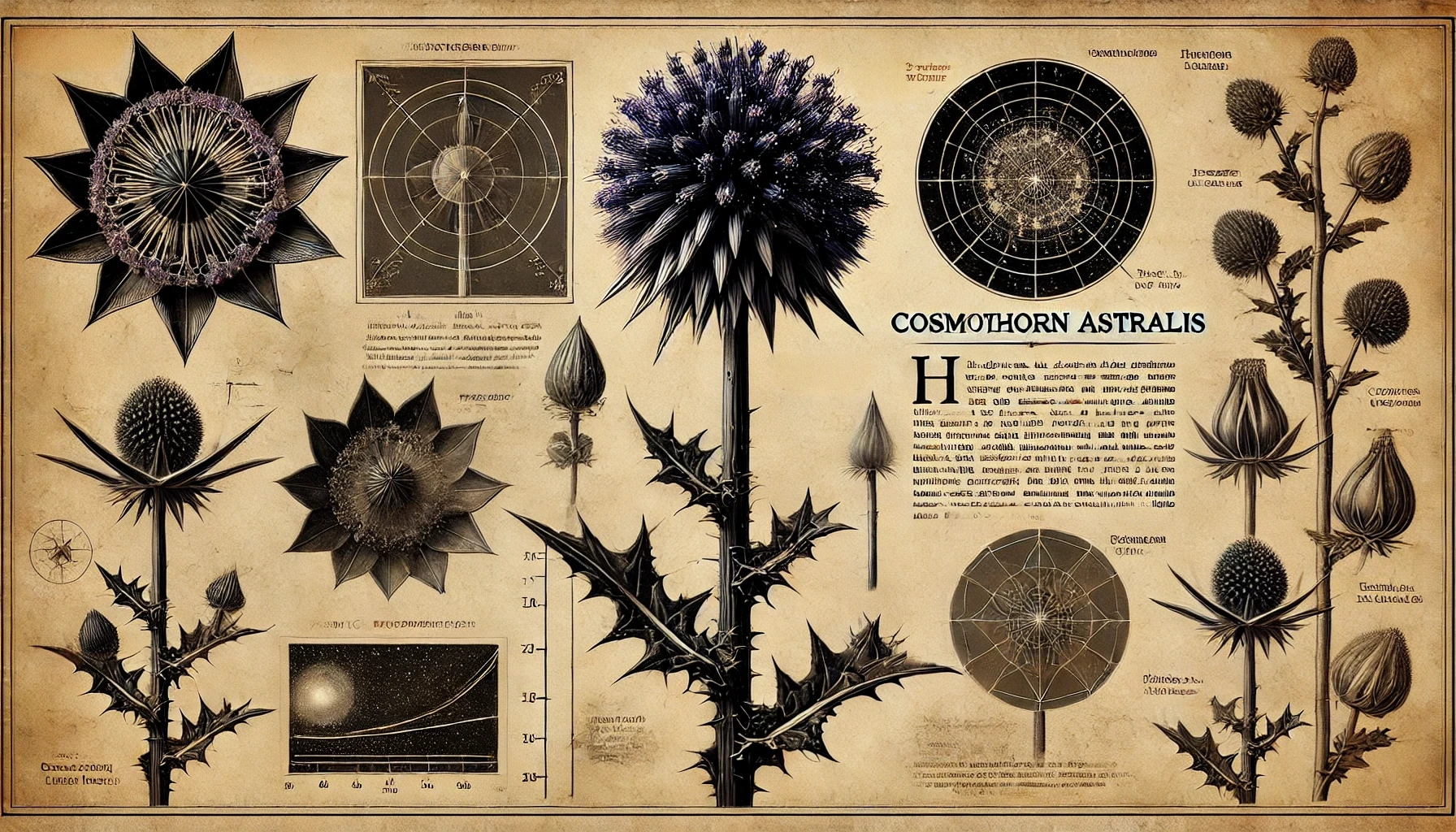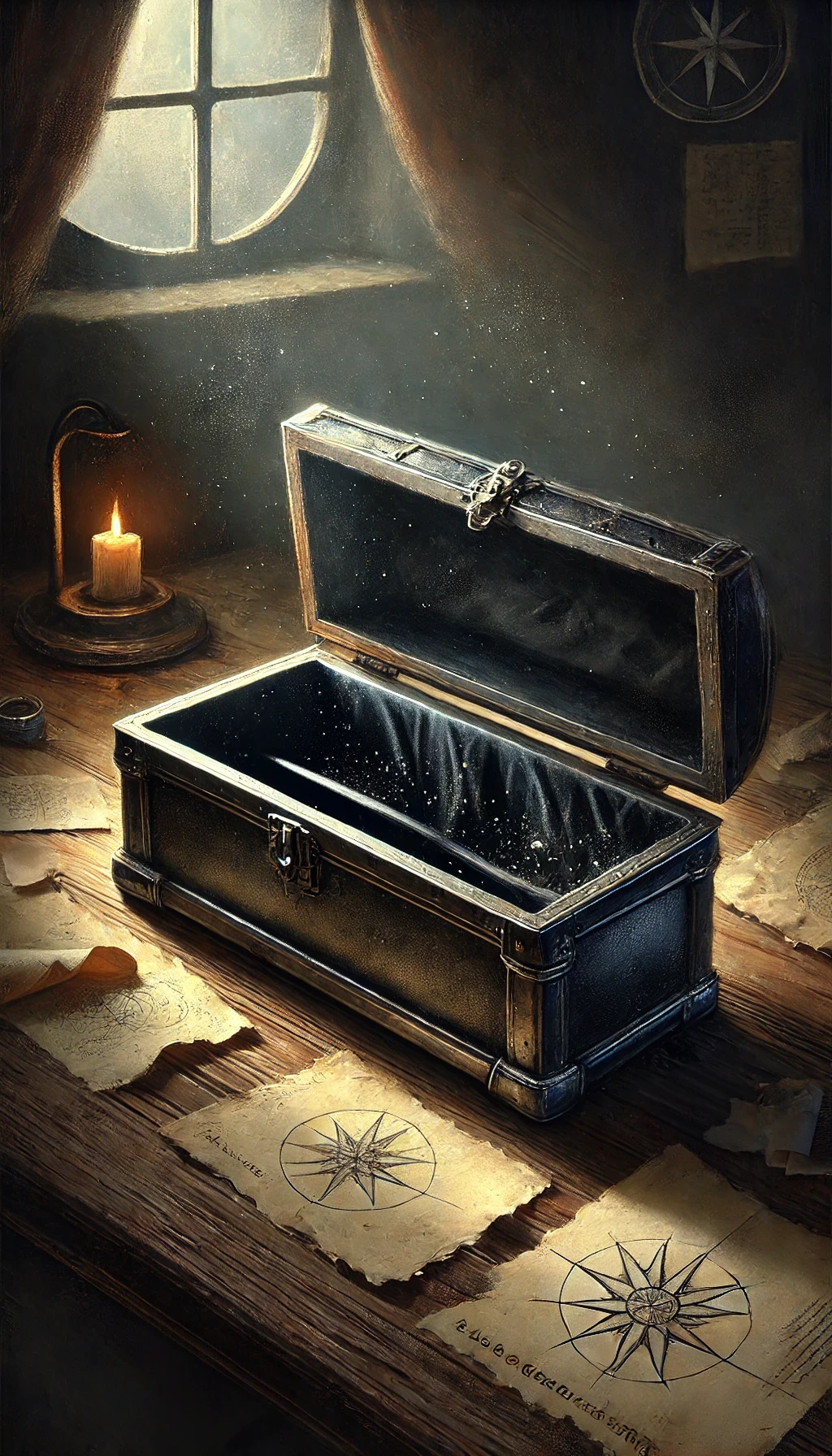Phenomenon Profile
Starshard Thistle rises like a blade of night sky made solid. Its singular, black-crystalline stem fractures light into nothing, and each plane of its faceted surface captures pinpoints of illumination—not reflections, but subtle imitations of starlight. The head of the thistle unfurls into a sprawling bloom of obsidian-black bracts, tipped with fine threads of pale, drifting luminescence.
Its glow is not steady, but pulses faintly in resonance with the stars above. On clear nights, the air around it thrums with barely audible overtones, like chimes pressed into velvet.
Even from a distance, it exerts presence. Travelers have reported sensations of being observed, or of standing too close to something impossibly large—but hidden just out of sight.
Origin and Emergence
The Starshard Thistle grows only at meteor impact sites, but not all sites qualify. The crater must be ancient—its core buried deep and undisturbed by human hands. Where the energies of the impact have had centuries to settle, this thistle emerges during eclipses and celestial alignments, appearing as a singular stalk among scorched soil and silent stone.
It does not cluster. Each new thistle grows in a separate place, tracing a pattern accross the site over decades and centuries.
No variant or subspecies has ever been found.
Interaction and Risk
Of all the known Cosmic flora, Starshard Thistle is the most dangerous to untrained minds. The plant projects an aura of deep gravitational disorientation: prolonged exposure may cause the body to feel inverted, rotated, or untethered from the ground.
Symptoms include:
- Perceived reversal of sound and direction.
- Involuntary upward eye fixation.
- Emotional detachment accompanied by intellectual clarity.
More than one initiate has fallen to their knees in its presence, overwhelmed by visions of the turning heavens, or of vast constructs composed entirely of music and math.
During harvest, even trained practitioners must work in teams—each grounded with silver-threaded tethers and guided by tone-chimes to keep time perception intact.
Usage and Preparation
Harvested only during solar eclipses, the thistle’s flower head is removed intact and dried inside opaque stone boxes lined with volcanic salt. Once powdered, the material behaves erratically unless kept in complete darkness.
Its most common use is as an amplifier—not a source of magic itself, but a lens that magnifies the cosmic signatures of other ingredients or rituals. A thimble of Starshard powder may:
- Sharpen the resonance of a gateway ritual.
- Stabilize a vision into other planes.
- Bind astral energy into a physical anchor.
It cannot be consumed safely. Even trace ingestion causes the user to forget what gravity feels like. Most never recover the sensation fully.
Records and Rumors
Among the earliest scrolls of the Guardian chroniclers, there are sketches and passages describing figures offering thistle-like blooms beneath eclipsed skies. Some depict outstretched hands toward stylized constellations, others include strange geometric halos encircling the plant itself.
Worship, offering, or celestial alignment—it is never explained. But the motif appears across multiple scrolls, often annotated only with cautious glyphs meaning
"Do not disturb what listens."
Druids do not treat this plant as they do others. When one is found, the area is marked with tuned stones, and access is restricted for a full lunar cycle. Only those trained in the Constellant Discipline are permitted to approach.



Comments